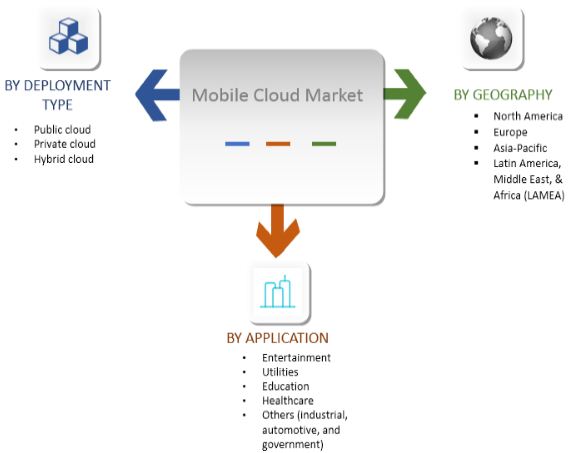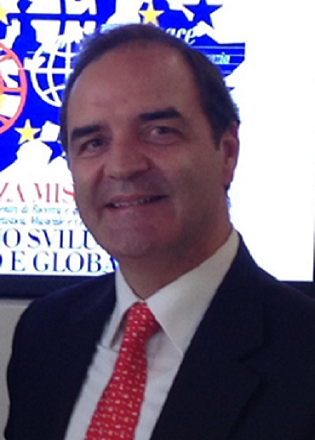
Mobile Computing 2021

Theme: Future of Mobile is the Future of Everything
We are delighted to announce our upcoming International Conference on Mobile Computing and Wireless Communication will be scheduled in Paris, France during November 18-19, 2021 which includes prompt keynote presentations, Oraltalks, Workshops/Symposia, Poster presentations, and Exhibitions.
The theme of the conference is around “Future of mobile is future of every Thing”. Mobile Computing 2021 is the premier event that brings together a unique and international mix of experts, researchers, and decision-makers both from academia and industry across the globe to exchange their knowledge, expertise, and research innovations to build a world-class Mobile Computing and Wireless Communication Conference.
Mobile web, video, virtual reality, and other applications
The web community has experimented with VR before, with VRML, but now WebVR takes a new approach to VR, one more suited to the modern web. We’ve accelerated 3D on the web since 2011 with the release of Web GL. Now the web can handle VR thanks to new web APIs that take advantage of VR hardware using Web GL.These APIs enable Web GL content to be displayed in 3D with a VR headset. They also provide headset and controller tracking information to give the user presence in the virtual world.
WebVR was first developed in 2014 at Mozilla. In 2016, an earlier version of the standard was available for desktop Chrome, Firefox and Samsung’s virtual reality web browser: Samsung Internet for Gear VR.These days, the standard is incredibly well supported on phones and desktop computers for almost all major headsets.The Web VR standards are worked on in the open, and they represent a collaboration between Mozilla, Google, Samsung, Oculus, Microsoft and, recently, Apple.
Next-generation 5G and 6G mobile networks
Many of the cellular devices connected nowadays are machines (IoT) rather than people, with the rise of Smart Homes, Smart Building and Smart Cities, so 5G and 6G will include increased demands for machine-to-machine communications, including robotic and autonomous drone delivery and transport systems. The Internet-of-Everything (IoE) is a related development.
Other trends predicted for 6G include Ultra-dense cell networks, Reconfigurable Hardware, Millimetre Waves for user access, enhanced Optical-Wireless interface, Networked VLC, Intelligent Networking and technologies to enable Full Immersive Experience for users.
One thing we can be confident on is that users will demand and expect greater global coverage, higher capacities and always-on connectivity for new and future internet services and applications, and that 6G will be expected to deliver all of these.
Wireless localization and tracking
Ego motion estimation and localization in large environments are key components in any assistive technology for real-time user orientation and navigation. We consider the case where a large known environment is explored without a priori assumptions on the initial location. In particular we propose a framework that uses a single portable 3D sensor to solve the place recognition problem and continuously tracks its position even when leaving the known area or when significant changes occur in the observed environment. We cast the place recognition step as a classification problem and propose an efficient search space reduction considering only navigable areas where the user can be localized.
Classification hypotheses are then discarded exploiting temporal consistency w.r.t. a relative tracker that exploits only the sensor input data. The solution uses a compact classifier whose representation scales well with the map size. After being localized, the user is continuously tracked exploiting the known environment using an efficient data structure that provides constant access time for nearest neighbor searches and that can be streamed to keep only the local region close to the last known position in memory. Robust results are achieved by performing a geometrically stable selection of points, efficiently filtering outliers and integrating the relative tracker based on previous observations.
Applications of machine learning to mobile/wireless research
The rapid uptake of mobile devices and the rising popularity of mobile applications and services pose unprecedented demands on mobile and wireless networking infrastructure. Upcoming 5G systems are evolving to support exploding mobile traffic volumes, real-time extraction of fine-grained analytics, and agile management of network resources, so as to maximize user experience. Fulfilling these tasks is challenging, as mobile environments are increasingly complex, heterogeneous, and evolving. One potential solution is to resort to advanced machine learning techniques, in order to help manage the rise in data volumes and algorithm-driven applications.
The recent success of deep learning underpins new and powerful tools the attackle problems in this space. In this paper we bridge the gap between deep learning and mobile and wireless networking research, by presenting a comprehensive survey of the crossovers between the two areas. We first briefly introduce essential background and state-of-the art in deep learning techniques with potential applications to networking. We then discuss several techniques and platforms that facilitate the efficient deployment of deep learning on to mobile systems. Subsequently, we provide an encyclopedic review of mobile and wireless networking research based on deep learning, which we categorize by different domains. Drawing from our experience, we discuss how to tailor deep learning to mobile environments. We complete this survey by pinpointing current challenges and open future directions for research.
Internet of Things (IoT)
Industrial IoT (IIoT) refers to the application of IoT technology in industrial settings, especially with respect to instrumentation and control of sensors and devices that engage cloud technologies. Recently, industries have used machine-to-machine communication (M2M) to achieve wireless automation and control. But with the emergence of cloud and allied technologies (such as analytics and machine learning), industries can achieve a new automation layer and with it create new revenue and business models. IIoT is sometimes called the fourth wave of the industrial revolution, or Industry 4.0. The following are some common uses for IIoT:
- Smart manufacturing
- Preventive and predictive maintenance
- Smart power grids
- Smart cities
- Connected and smart logistics
- Smart digital supply chains
Satellite Communication
The Department of Space, in partnership with the Department of Telecommunication and the Department of Science and Technology, framed the Satellite Communication Policy in 1997 (SATCOM Policy). Through the SATCOM Policy, the government aimed to develop a strong satellite communication service industry in India and thus, the emphasis of the policy was on (a) developing satellite communication, launch vehicles and ground equipment industry in India; (b) making the infrastructure built through Indian National Satellite System (INSAT) available to a larger segment of the economy; (c) encouraging the investment by private sector in the space industry in India and; (d) attracting foreign investment in the satellite communication sector. The framework of the SATCOM Policy also laid the road map for authorizing INSAT capacity to be leased to non-government parties, allowing Indian parties to provide services like up linking of TV through Indian satellites, authorizing Indian administration to inform and register satellite systems and networks and authorizing operation of foreign satellites from India.
As the SATCOM Policy did not specify the manner in which the policy can be implemented, the Department of Space, in the year 2000, formulated the norms, guidelines and procedures for implementing the framework of SATCOM Policy. The norms and guidelines issued by the Department of Space focused on the use and development of the INSAT network, preferential treatment to Indian satellites, allocation of capacity for use of Indian satellites by private market players etc.
Mobile computing and wireless networking market is ready to take off - some research firms expect it to become a 70 billion dollar market in the new millennium (year 2005-2006) if you include wireless data services, mobile devices, application software, systems integration and related services. A study by CIBC World Markets done in 2000 estimate wireless data market itself to explode to 24.5 billion market by 2004. While this forecast may not been fully met, we think it might reach very close to that number.
The biggest challenge that we face in sizing the market is to define what is included and what is not included by a particular analyst in his/her study. The biggest skew is inserted by wireless handsets. If you include second and third generation handsets, the market becomes huge. During 2000, the number of handsets sold world-wide was 440 million units worldwide. At $200 unit price, this represents $88 billion. Since then, annual cellular handset sale numbers have hovered around 450 million market. If you add to that, wireless network infrastructure market (base stations, etc.), it may be another $40-50 billion. We suggest to market planners and forecasters that they should not include cellular handsets in mobile computing market sizing because primary use of these handsets is for voice, and not wireless data. Of course, in future, increasing percentage of advanced handsets will be utilized for wireless data applications. Yet, this percentage will not reach 10% for the next several years - we mean where wireless Internet is a major application and nut a casual application.
More recent studies have forecast the market to be as high as twice of the estimate in the first paragraph. MobileInfo.Com is somewhat cautious in its own estimates. We believe that methodology used in some of these surveys and estimates is faulty. The forecasters assume elastic supply of capital to invest in new technology without any competition from other sectors. They also do not apply statistical validation tests against economic data. We suggest a more conservative outlook and propose that market planners should use caution. By any standards you use, market for mobile computing and wireless is large.
Global Mobile Computing Industry
Global Mobile Computing Market to Reach $488. 6 Billion by 2027. Amid the COVID-19 crisis, the global market for Mobile Computing estimated at US$396. 4 Billion in the year 2020, is projected to reach a revised size of US$488.New York, Sept. 04, 2020 (GLOBE NEWSWIRE) -- Reportlinker.com announces the release of the report 6 Billion by 2027, growing at a CAGR of 3% over the analysis period 2020-2027. Smartphones, one of the segments analyzed in the report, is projected to record a 3.5% CAGR and reach US$231.1 Billion by the end of the analysis period. After an early analysis of the business implications of the pandemic and its induced economic crisis, growth in the Tablets segment is readjusted to a revised 2.1% CAGR for the next7-yearperiod. The U.S. Market is Estimated at $107.1 Billion, While China is Forecast to Grow at 5.6% CAGR The Mobile Computing market in the U.S. is estimated at US$107.1 Billion in the year 2020. China, the world`s second largest economy, is forecast to reach a projected market size of US$100 Billion by the year 2027 trailing a CAGR of 5.6% over the analysis period 2020 to 2027. Among the other noteworthy geographic markets are Japan and Canada, each forecast to grow at 0.8% and 2.2% respectively over the 2020-2027 period. Within Europe, Germany is forecast to grow at approximately 1.4% CAGR. Laptops Segment to Record2.9% CAGR In the global Laptops segment, USA, Canada, Japan, China and Europe will drive the 2.5% CAGR estimated for this segment. These regional markets accounting for a combined market size of US$104.4 Billion in the year 2020 will reach a projected size of US$124.5 Billion by the close of the analysis period. China will remain among the fastest growing in this cluster of regional markets. Led by countries such as Australia, India, and South Korea, the market in Asia-Pacific is forecast to reach US$67.7 Billion by the year 2027, while Latin America will expand at a 3.6% CAGR through the analysis period. We bring years of research experience to this 20th edition of our report. The 161-page report presents concise insights into how the pandemic has impacted production and the buy side for 2020 and 2021. A short-term phased recovery by key geography is also addressed.
The advancement in the field of mobile and cloud computing along with wireless technology and multimedia communication has transformed the outlook of the global mobile cloud market. Mobile cloud comprises three essential deployment models-public, private, and hybrid that provides services according to the subscribers requirements. With the mobile cloud, users have better access to real time on-the-go services and running complex applications. It has helped organizations reach greater markets, reducing the expenditure by offering better scalability and increasing revenues. The mobile cloud market was valued at $12.07 billion in 2016 and is expected to reach at $74.25 billion by 2023, at a CAGR of 30.1% from 2017 to 2023.
The mobile cloud market includes delivering mobile services and apps from a centralized data center to a mobile device. Business users are the key adopters of mobile cloud services as it offers better availability, scalability, and reliability to them.
The Asia-Pacific mobile cloud market is poised to grow at a significant rate during the forecast period. The private mobile cloud segment dominated the global market in 2016 and is expected to maintain its dominance in the near future. Furthermore, other industry verticals such as entertainment, utilities, education, healthcare, government, automotive, and industrial have dominated the global mobile cloud market, as these are the major prime end users of the mobile cloud.
The report focuses on the mobile cloud market growth prospects and restraints of the based on an analysis of the regional trends. The study provides Porters five forces analysis of the industry to understand the impact of various factors such as bargaining power of suppliers, competitive intensity of competitors, threat of new entrants, threat of substitutes, and bargaining power of buyers on the growth of the market.
The mobile cloud market comprises vendors such as Amazon Web Services Inc, Microsoft Corporation, Google Inc., Salesforce.com, Apple Inc., Rackspace Inc., Dell EMC, IBM Corporation, Oracle Corporation, and Akamai Technologies Inc.
Segment Overview
The mobile cloud market is segmented based on application, deployment, and region. Based on application, it is divided into entertainment, utilities, education, healthcare, and others (government, automotive, and industrial). Based on deployment, it is classified into public, private, and hybrid.
The market is segmented based on region into North America, Europe, Asia-Pacific, and Latin America, the Middle East, & Africa (LAMEA) including the country-level analysis for each of these regions.
Mobile Cloud Market Segmentation

Get more information on this report
Top Impacting Factors
According to our analysis of the impact of various factors on the global mobile cloud market, the market is expected to be driven by an increase in smartphone usage, availability of faster network connections, and a rise in BYOD (Bring Your Own Device) technologies. However, privacy concerns and lack of physical & logical security integration are expected to hamper the market growth during the forecast period.
Increase in Smartphone Usage
Smartphone and Internet usage has risen tremendously over the past few years. The consumers are not just using smartphones to store images, music, and videos, but also to access them from other devices. Also, with the changing needs of well informed and new age customers who interact with brands via smartphone across multiple touch points, businesses are transforming the way they do business. They are adopting mobile cloud solutions for intensive processing and storage demand of real time and high-end applications on smartphones.
Privacy and Security Concerns
Privacy and security concerns are the major challenges faced by the global mobile cloud market. Since smartphones have limited processing speed and memory, they are unprotected and are prone to numerous security threats that aim to steal the users sensitive data. Also, there have been reports of third-party companies selling important private information to other agencies without the users permission. This has become a paramount concern for mobile security stakeholders.
Advances in Technology
The growth of the mobile cloud market is expected to be enhanced by a wide range of enabling technologies such as 5G, HTML5, CSS3, Hypervisor, Cloudlets, and Web 4.0. These technologies will make way for specifications for offline support, allow web applications to run on any smartphone without being aware of the underlying architecture, and will reduce latency with a faster response.
International Conference on Mobile Computing And Wireless Communication helps to inform and attract new customers quickly and efficiently. The size and diversity of our advertising options, including banners, sponsored emails, article alerts or newsletters, provide clients with the very best customized marketing opportunities in science and medicine.we are one of the renowned events organizing platform with most of eminent speakers and business audience form all over the globe indexed. The advertising platform we provide you is the best chance of showcasing your products/services, and branding your company.
If you are looking for a global exposure for your products and services, this is the right place for you. With over 5 million readers worldwide and nearly 3million hits a month on our website, we have engaged audience of students, research scholars, scientists, doctors, professors, pharmacists and professionals from companies across the domains. We maintain high quality and ethical standards of publication industry, which make us unique and better than the rest.
Our attendees can be your upcoming customers. If you sell research materials, recycling products, chemicals or relevant equipment or services, here is the opportunity to advertise in the website that can connect you to leading experts and science specialists worldwide.
Meetings International is a global leader in producing high quality conferences, meetings, workshops and symposia in all major fields of science, technology and medicine. Since its inception, Meetings International has been associated with national and international associations, corporations and high level individuals, dedicated to host world class conferences and events. Meetings International supports broad scope research and peer review at a broad range of specialists around the world. The key strategic objective of Meetings International is to communicate science and medical research between academia, and industry.
Grow your business globally and sell your research materials, pharmaceuticals, Antibodies, Clinical Reagents, Chemicals, instruments, or you are looking to recruit that next investigator. Meetings International is providing opportunity to advertise and connect with the experts and leaders across the world. Advertisement banner must be provided by the advertising company and must be in the jpg or jpeg format. The banner must be of high resolution and must not have copyright infringement.
For further queries, connect our conference manager at medicine@annualmeetings.net
You can also connect us via WhatsApp: +44 7588 784 761
Google Analytics Metrics of ENT 2021
The visitor’s traffic is the benchmark for the success of conference and Mobile Computing 2021 is constantly attracting viewers across the world.According to the Google Analytics, more than 100+ monthly audiences are visiting to our conference websites for submitting abstracts; brochure downloads registration, exhibition and sponsorship queries.
Readers from the major countries including United States, Japan, United Kingdom, European Union, Asia-Pacific and Middle East visit our conference domain to participate and present their latest research.
Google Analytics Metrics of Meetings International
437,380 + Users
1,606,987 + Page views
644,430 Sessions at the rate of 1.47 per user
Meetings International has so far received 644,430 Sessions which confirm the outstanding pool of new users and visitors. Meetings International works on Open Access publishing model, hence they are the best choice for the scholars and authors worldwide. We understand the importance of timely communication and our efficient and quick review process avoids unnecessary delays in the production, publication and circulation of the published material worldwide with in no time while enhancing the visibility of the authors and conferring credibility to scholars and readers.
The promotion of the individual author contributions is taken care of and hence the authors enjoy the reputation among global audience. Meetings International values the contributions by the authors and takes adequate measures in propagating and promoting their outcomes by permanently archiving as well.
Mobile Computing 2021 and upcoming conferences will recognize participants who have significantly added value to the scientific community of environmental science and provide them outstanding Young Scientist Awards. The Young Scientist Award will provide a strong professional development opportunity for young researches by meeting experts to exchange and share their experiences at our international conferences.
Mobile Computing 2021 focuses mainly on SDGs goals, Climate action, environment friendly things etc. The Advanced Microbiology 2021 is providing a platform for all the budding young researchers, young investigators, post-graduate/Master students, PhD. students and trainees to showcase their research and innovation.
Eligibility
Young Scientists, faculty members, post-doctoral fellows, PhD scholars and bright Final Year MSc and M.Phil. Candidates. Persons from Scientific Industry can also participate.
Benefits
The Young Scientist Feature is a platform to promote young researchers in their respective area by giving them a chance to present their achievements and future perspectives.
- Acknowledgement as YRF Awardees
- Promotion on the conference website, Young Researcher Awards and certificates
- Link on the conference website
- Recognition on Meetings Int. Award Page
- Chances to coordinate with partners around the worldo Research work can be published in the relevant journal without any publication fee
Criteria
- All presented abstracts will automatically be considered for the Award.
- All the presentation will be evaluated in the conference venue
- All the awards will be selected by the judges of the award category
- The winners of the Young Scientist Award will receive award certificate.
- The awards will be assessed as far as plan and format, intelligence, argumentation and approach, familiarity with past work, engaging quality, message and primary concerns, parity of content visuals, and by and large impression.
Guidelines
- All submissions must be in English.
- The topic must fit into scientific sessions of the conference
- Each individual participant is allowed to submit maximum 2 papers
- Abstract must be submitted online as per the given abstract template
- Abstracts must be written in Times New Roman and font size will be 12
- Abstract must contain title, name, affiliation, country, speaker’s biography, recent photograph, image and reference
Conditions of Acceptance
To receive the award, the awardees must submit the presentation for which the award is given, for publication at the website, along with author permission. Failure to submit the PPT and permission within the designated timeframe will result in forfeiture of award.
Award Announcements
Official announcement of the recipients will occur after the completion of Mobile Computing 2021 Conference.
- Artificial intelligence and agent technology
- Mobile web, video, virtual reality, and other applications
- Next-generation 5G and 6G mobile networks
- Wireless localization and tracking
- Applications of machine learning to mobile/wireless research
- Interoperability in IoT and Robotic IoT Systems
- Satilite Communication
- Cloud Computing
- Synchronization and Scheduling Issues in Mobile and Ad Hoc Networks
- Wireless Sensor Networks
- Low-latency networking
- Cyber Trust and Security
- Journal of Computer Engineering & Information Technology.
- Journal of Electrical Engineering and Electronic Technology.
8 Organizing Committee Members
4 Renowned Speakers
JOANNA SLAWINSKA
Research Associate, Artificial Intelligence & Robotics, Associate, University Of Wisconsin-Milwaukee
USA
HYEONG CHEOL MOON
Professor, Chungbuk National University
South Korea
JAVIER FIZ PEREZ
Professor, European University Of Rome
Italy
SUSAN DIAMOND
Royal College of Surgeons in Ireland-Medical University of Bahrain.
Bahrain





























































































































